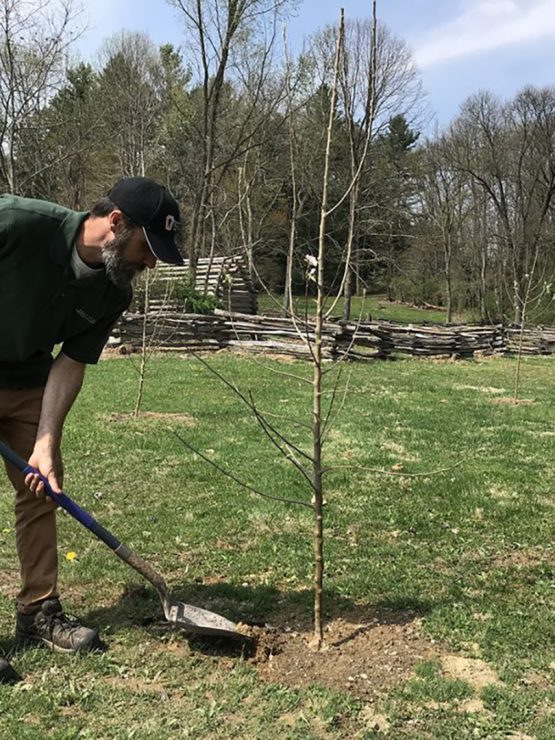 The planting of cultivated varieties of apples was part of the continuous effort of those living on the frontier to improve their farms and provide food for their families.
The planting of cultivated varieties of apples was part of the continuous effort of those living on the frontier to improve their farms and provide food for their families.
One of the common apple varieties available in the 18th century was the Newtown Pippin. It was reportedly developed in the late 17th or early 18th century in Newtown, N.Y., which is now called Elmhurst, in the borough of Queens in New York City.
Thomas Jefferson planted 50 Newtown Pippin apple trees in his orchard at Monticello. The Newtown Pippin and the Esopus Spitzenburg were his two favorite apples.
Newtown Pippins are a light green apple, sometimes with a yellow tinge and frequently russeted (a brown, rough texture) around the stem. The flesh is yellow, crisp, and tart, making it an exceptional cider apple. They also keep very well, which would have been very important for a frontier family.
According to Joseph Doddridge, who grew up on the 18th-century frontier just five miles from where Meadowcroft is today, the native crab apple was abundant along the creeks of the area. Doddridge published a book in 1824 in which he recalled that children were fond of eating the native apples. If any were still found on the tree in the winter after freezing weather, they were especially prized since they lost some of their inherent sourness.
As part of the continued development of Meadowcroft’s 18th-century Frontier Trading Post, we recently planted four Newtown Pippin trees. If all goes well, these six-foot-tall trees should begin producing apples within a year or two and provide for many years of cider making!
David Scofield is the director of Meadowcroft Rockshelter and Historic Village.



